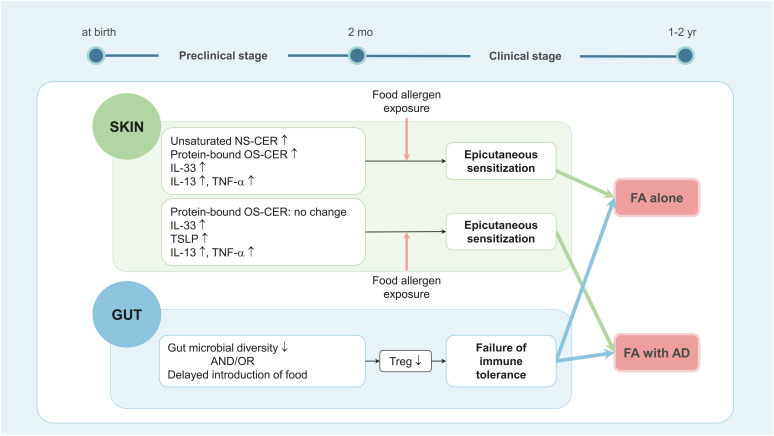Fig. 2. A hypothesis concerning the early events in the skin leading to FA development during early infancy. FA development is linked to concurrent epicutaneous sensitization to food allergens and failure to induce oral tolerance. AD is a strong risk factor for FA development and FA is often accompanied by AD. Thus, early AD-associated skin changes—elevated TSLP, IL-13 and TNF-α levels—within the first 2 months of life, increase the risk of developing FA. However, in the case of FA occurring independent of AD, increased levels of IL-33, IL-13, TNF-α, unsaturated NS-CER, and protein-bound OS-CER are observed within 2 months of age.
FA, food allergy; AD, atopic dermatitis; TSLP, thymic stromal lymphopoietin; IL, interleukin; TNF, tumor necrosis factor; NS-CER, nonhydroxy fatty acid sphingosine ceramide; OS-CER, ω-hydroxy fatty acid sphingosine ceramide; Treg, regulatory T cell.

